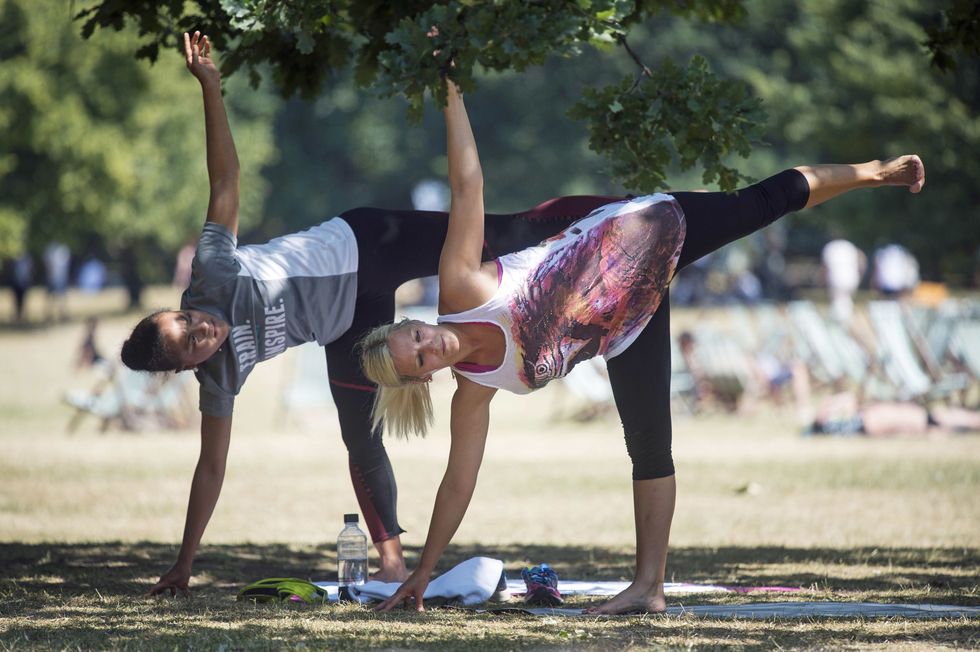Three minute movement can drastically lower your risk of diabetes - reducing glucose levels by 10 per cent

Research has revealed that doing three minutes of yoga every 60 minutes can reduce your risk of developing the disease
Don't Miss
Most Read
Latest
Many Britons sit at desks from 9am - 5pm Monday to Friday and consequently lead relatively sedentary lives.
Physiotherapists have found that breaking up the day with short bursts of a particular exercise can have major health benefits.
Whether you're working from home or in the office, 180 seconds (or three minutes) of yoga every 60 minutes is a great way to reduce your risk of developing diabetes, according to physios at Glasgow Caledonian University.
In a study they investigated the effects of breaking up sedentary behaviour with short bouts of yoga and tai-chi on glycaemic control, concentration and wellbeing in healthy people.

Three minutes of yoga every 60 minutes can reduce your risk of developing diabetes
|GETTY IMAGES
The two year study, which involved 15 adults aged between 26 and 28 following a standardised diet, found that short bursts of yoga during the working day significantly lowers glucose (blood sugar) levels.
This decreased the risk of developing diabetes without compromising on the individual's concentration or wellbeing.
The amount of sugar in participants’ blood was reduced by about 10 per cent following the quick yoga session, which involved moves such as downward dog, cobra, warrior, cat-cow and mountain.
Tai chi, a Chinese martial art known for its slow, intentional movements, did not have the same significant effect on glucose levels but was great for concentration and well-being.
Lead author of the study, Alex Colvin, said: “Through this research, I want to make people aware that you can break up your sedentary time with things that are good for your mental and physical wellbeing, and to reduce the risk of diabetes.
“There has been a lot of research into the benefits of yoga and tai-chi, which show favourable effects, but this is the first research that I am aware of that investigates the use of shorter three minute bouts to break up a working day and shows results that this can help to reduce the risk of diabetes.
“This is also good news for employers who dislike the use of physical activity to break up sedentary time because they have this misplaced perception that it will negatively impact on production, as we have found it’s quite the opposite.
"We measured concentration and wellbeing throughout the study. Although there wasn’t a change with yoga and tai-chi, at least it didn’t get any worse, which disproves that doing these types of things is bad for worker productivity."
Alex added that if glucose levels were lowered in those aged 26-28 with the short bursts of yoga, it might be even more beneficial to people who are prediabetic, reaping even more significant results.
LATEST DEVELOPMENTS

Yoga reduces blood glucose levels in the body
|PA IMAGES
Professor of Health Behaviour Dynamics Sebastien Chastin, from the University’s School of Health and Life Sciences’ Research Centre for Health (ReaCH), commented on the results. He praised the fact that quick bursts of yoga can reduce the risk of diabetes without causing people to lose concentration or productivity in the workplace.
He said: "Clearly we all spend far too much time sitting in the office or working from home.
"This shows that short bouts of yoga can be done anytime during the day and it has the impact we expected that it can be turned into one of the interventions or reduce the risk of diabetes.
“What’s also really important about this research is that it demonstrates that it doesn’t reduce the productivity of workers. That’s always the worry of the bosses. Allowing them to have that time shows that it actually doesn’t reduce productivity at all, if anything it probably increases productivity so there’s not just a health incentive for the workers to do it but also for the employers to support that and implement it.”











